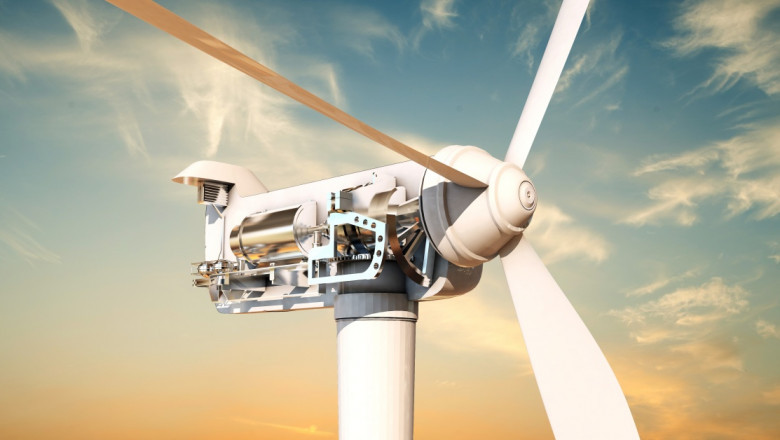As the world increasingly leans toward renewable energy, wind power has emerged as one of the most promising and rapidly expanding segments. From wide plains to deep-sea platforms, wind turbines are now a common sight across the globe. However, behind their sleek blades and towering structures lies a complex system of mechanical components that must operate flawlessly to ensure continuous power generation. One such critical element is gear oil a lubricant that plays a key role in the performance and lifespan of wind turbines.
This blog offers a comprehensive overview of the wind turbine gear oil market, shedding light on its current dynamics, evolving trends, and the factors shaping its future.
What Is Wind Turbine Gear Oil?
Wind turbine gear oil is a specialized lubricant used in the turbine’s gearbox to reduce friction between moving parts, dissipate heat, protect against wear and corrosion, and ensure efficient power transmission. Because gearboxes in turbines operate under heavy load conditions and are often situated in remote or offshore locations, the oil used must be exceptionally durable and high-performing.
Choosing the right gear oil is essential not just for smooth operations, but also to extend maintenance intervals and minimize costly downtime. As wind farms continue to grow in scale, so does the demand for reliable lubrication solutions.
Market Size and Growth Outlook
The global wind turbine gear oil market has seen consistent growth over the past decade, driven by the rise in installed wind capacity. As of 2024, the market is valued in the range of several hundred million USD, and is projected to grow at a compound annual growth rate (CAGR) of approximately 6–8% through the end of the decade.
The market’s growth is directly linked to the expansion of wind energy projects worldwide, particularly in regions such as Asia-Pacific, Europe, and North America. With more countries pushing toward net-zero goals and green energy transitions, investments in wind infrastructure are accelerating resulting in greater consumption of high-performance gear oils.
Key Market Segments
The wind turbine gear oil market can be segmented in several ways:
By Product Type:
-
Synthetic Gear Oil – Offers superior performance under extreme conditions; higher cost but longer service life.
-
Mineral-Based Gear Oil – More affordable but less durable; gradually being phased out in favor of synthetic alternatives.
By Turbine Type:
-
Onshore Wind Turbines – Easier to maintain, but still require reliable and long-lasting gear oils.
-
Offshore Wind Turbines – Operate in harsher environments, requiring advanced lubricants with excellent water resistance and corrosion protection.
By Geography:
-
Asia-Pacific – Dominated by China and India, this region is the largest and fastest-growing market for wind power and associated gear oils.
-
Europe – Strong in offshore development, with a mature regulatory environment promoting the use of sustainable lubricants.
-
North America – Steady expansion of both onshore and offshore wind, particularly in the U.S.
Major Drivers of Market Growth
1. Increase in Wind Installations
The biggest factor fueling market growth is the surge in wind energy projects. Every new turbine installation creates demand for initial lubrication, while existing turbines contribute through ongoing maintenance and oil replacement.
2. Shift Toward Synthetic Lubricants
As wind turbines become larger and operate under more extreme conditions, there is a clear industry shift from traditional mineral oils to synthetic gear oils. These oils last longer, reduce downtime, and provide better overall protection.
3. Focus on Reducing Maintenance Costs
Operators are aiming to cut long-term operational expenses by using gear oils that can support extended service intervals sometimes up to 7 years. This trend is particularly important for offshore turbines where maintenance is expensive and logistically complex.
4. Environmental and Regulatory Considerations
Sustainability is now a business imperative. With rising awareness and government regulations (like the U.S. EPA’s Vessel General Permit), there’s increasing demand for Environmentally Acceptable Lubricants (EALs), especially in offshore applications.
Competitive Landscape
The wind turbine gear oil market is moderately competitive, with a mix of global and regional players. Some of the leading companies include:
-
ExxonMobil
-
Shell
-
TotalEnergies
-
Klüber Lubrication
-
Castrol
-
FUCHS
These companies compete on factors such as product performance, price, customer support, and OEM approvals. Many work closely with wind turbine manufacturers to develop custom formulations tailored to specific gearbox designs and operating conditions.
Future Outlook
The wind turbine gear oil market is set to grow steadily in tandem with the global wind energy sector. Innovations in lubricant chemistry, growing emphasis on sustainability, and increased deployment of offshore wind farms will continue to shape the market.
As wind turbines become more sophisticated and operate in increasingly demanding environments, the need for high-performance, long-lasting, and eco-friendly gear oils will only become more critical. This positions the gear oil segment as not just a supporting act, but a vital enabler of the clean energy transition.






















Comments
0 comment